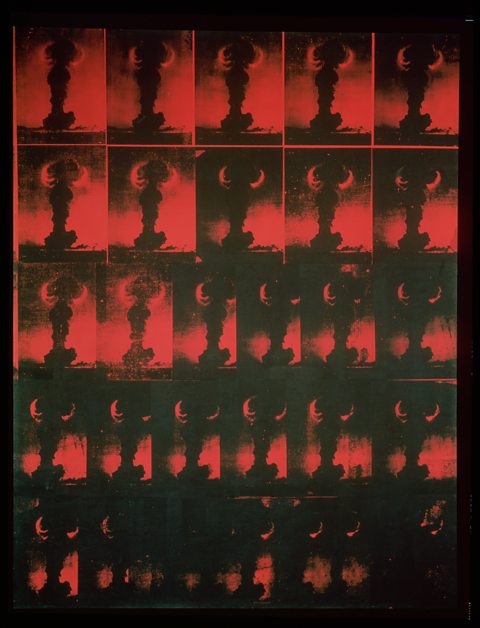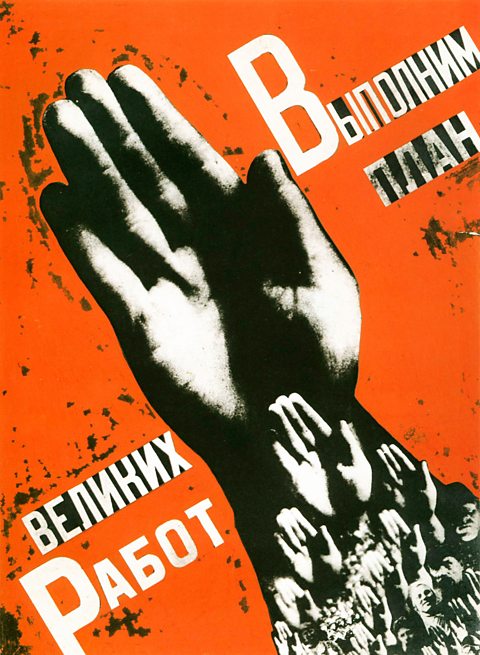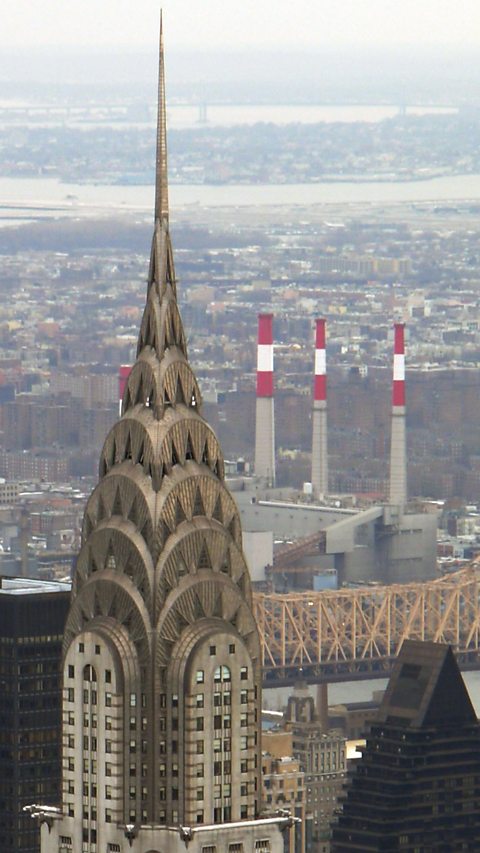Gradation
Patterns do not always remain the same. Sometimes a motif is put through a number of small gradual changes so that its shape, colour or size becomes increasingly different. This is called gradation.

Atomic Bomb: Red Explosion (Andy Warhol, 1965) features a repeating motif of the mushroom cloud from a nuclear explosion.
The regular repetition shows a large number of identical bombs all exploding together. Although the shape and size of the motif remains the same, Warhol uses gradation of colour to change the pattern.
Red dominates at the top of the print but the images become increasingly black towards the bottom. Eventually there is very little detail left to see.
The whole image suggests Warhol is commenting on the mass destruction of nuclear war which will leave nothing behind.


Let Us Fulfill the Plan of the Great Projects (Gustav Klutsis, 1930) is a Russian poster design based on a motif of a raised hand.
This is a gradating pattern because the motif grows from small hands in the bottom right corner to one hand that dominates the poster.
Repeating the motif and making it become larger suggests how the power of individuals all voting together can combine and grow into united strength.


The top of the Chrysler Building in New York City features an arch made of radiating triangles and lines as a motif.
A gradating pattern is created because each time the motif is repeated it becomes narrower and more pointed.
